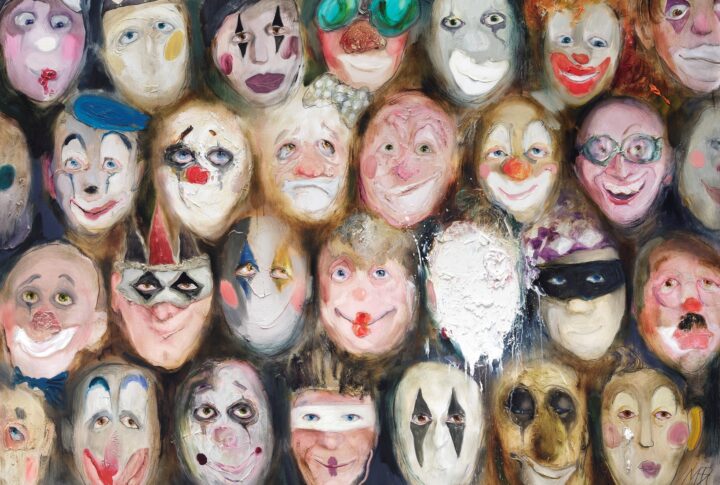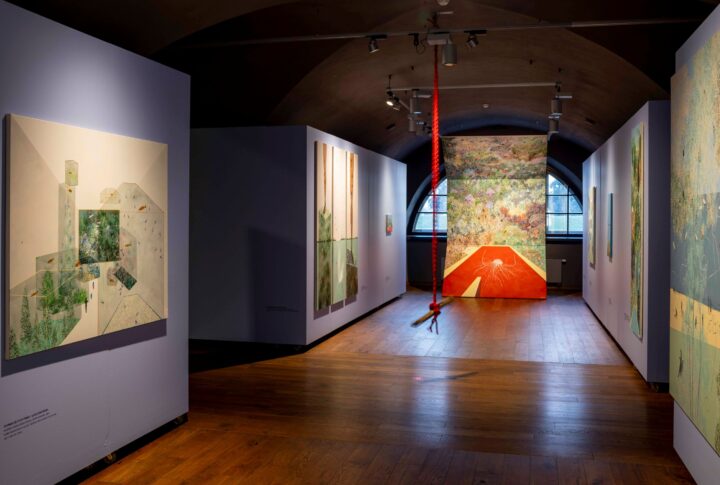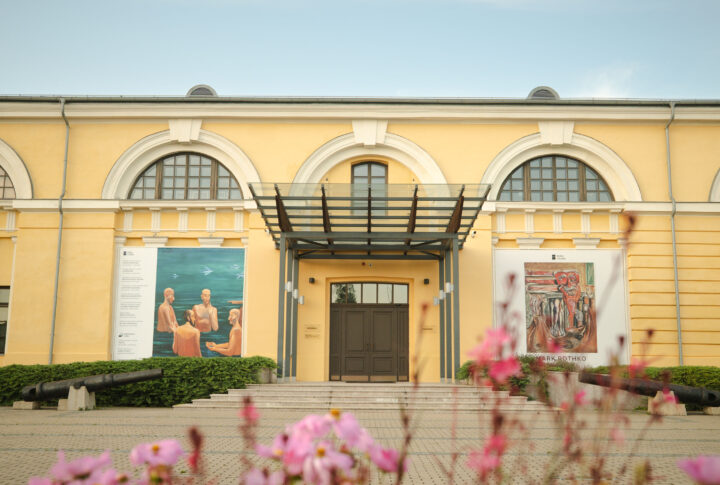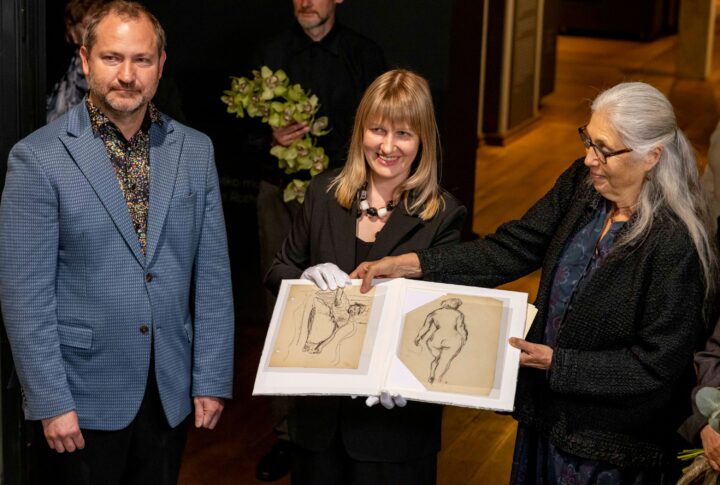Quietly Whispering Black, or Silence Uttering Blackly. On Vaidotas Janulis’s latest solo exhibition at the Rothko Museum
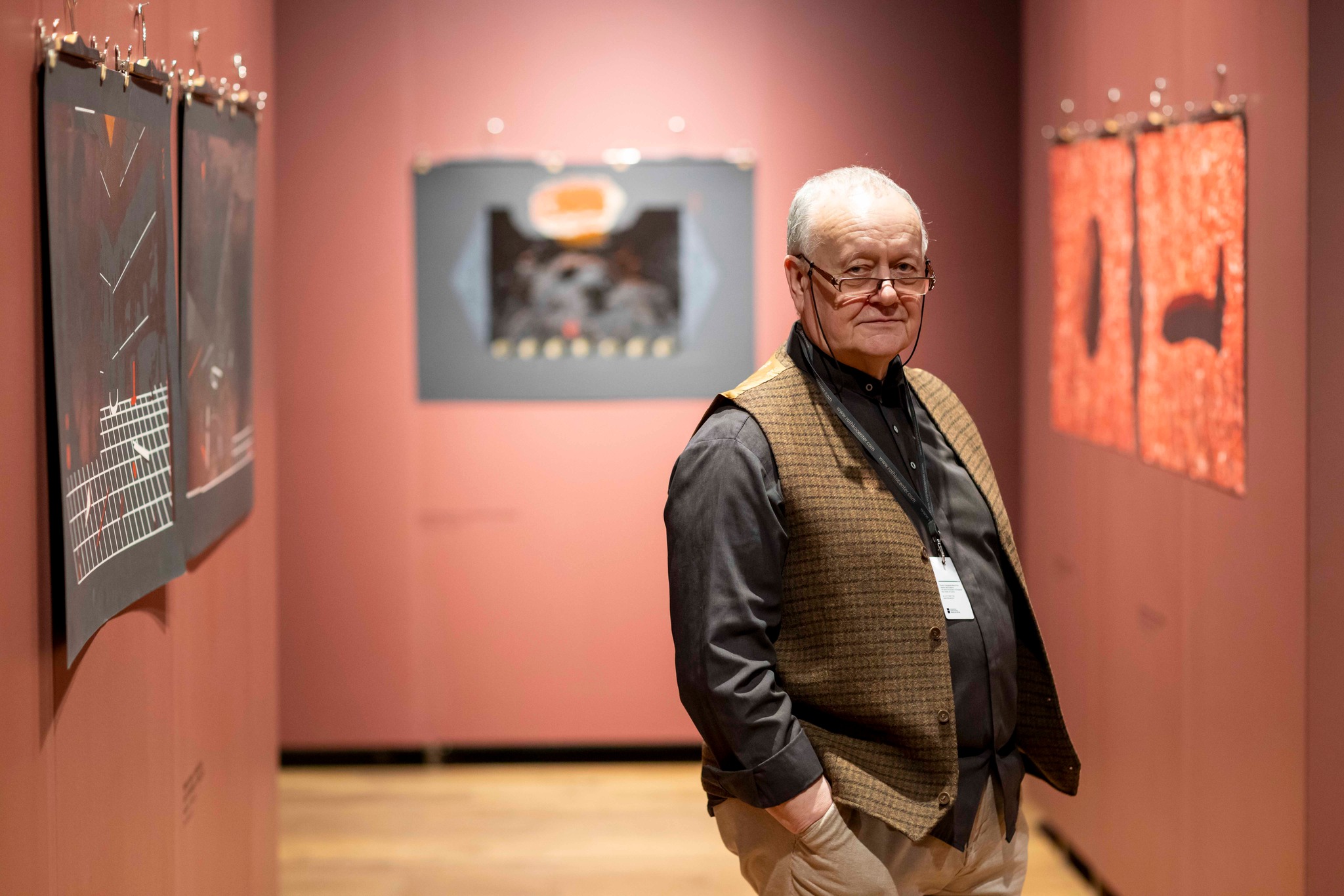
Envelope – as a Landmark
Vaidotas Janulis, as ever, continues to experiment. In his latest exhibition, he presented not only works in the silkscreen technique, but also assemblages and objects. Together, they form two separate narrative threads that smoothly intertwine into one story.
The exhibition is about what shapes our perception – the relationships and messages that reach us from both past and present. It also concerns the matter of choice – the moments of accepting or rejecting the information we receive.
Black, more than any other colour, tends to be associated with the dark hours of night – a time when everything calms down and silence prevails. Its depth depends on the moment, on the point of presence, shaped not only by our surroundings but by an inner stillness. Yet absolute silence, like absolute black, is impossible. It is not hard to imagine black as a silent language; what’s harder is to grasp how communication channels are found and function within this viscous black. Janulis’s exhibition is precisely about this: black as a mobile force, visually and conceptually, transmitting bright, though not always legible, messages.
At first, the artist appears to make no use of trickery, offering his viewers a familiar visual language. Hence the presence of envelopes. While not new to Janulis’s practice, they now appear in a much broader context, suggesting more abstract concepts.
The envelope still symbolises the transmission of a message – as one might expect – but it is no longer the sole or even primary vehicle of meaning. Instead, it becomes a component within the artwork, often functioning as a kind of landmark that guides the viewer towards the central idea. This idea is then expanded through other conceptual and formal elements, which often carry a more significant symbolic charge. At times, Janulis neatly arranges envelopes like cosy pockets on a black velvet sheet, enhanced by the sheen of an even more intense glossy black newsprint that forms something akin to a media shirt. Such subtle tonal shifts in black recur throughout the exhibition. Moreover, elsewhere, the envelopes become red flags, and though at first glance they take on completely different functions, their meaning does not change.
This exhibition, like a guided hunt, defines a territory, fences off a zone, and indicates a direction. What territory and towards what end is left for the viewer to decide. The work is not tied to any specific event or historical fact. Instead, it is presented as an abstract concept – a meditation on how knowledge is formed, transmitted, and received.
More Important – Not What, but How
Though the artist steers clear of topical specifics, the titles serve as signposts, suggesting areas of reflection. If we are using the interpretative lens of archives, it likely refers to all possible forms of archiving – from the historical to the private, from the tangible to the intangible – even the archiving of thoughts and feelings. Here, it is not the nature or content of the archive that matters most, but the very act of archiving. The works draw attention to the fact that information is stored – accumulated – somewhere and that it can be retrieved, read, and reinterpreted in a different time or context. Its meaning shifts accordingly, sometimes acquiring symbolic weight.
The envelopes in Janulis’s works are not left empty, notes are placed within them, but there is no need – or even possibility – to read them. The text provides no content and only means text, signifying a communication channel – the form of transmission, maybe even its fact, but nothing more. By contrast, red lines, dots, and marks that pierce the black surfaces disturb the visual silence. More disquieting still is the cloud of information, sewn with red thread, hanging above and casting a leaden shadow. Is it real? And if so, is it to be believed? Would its meaning change if the threads were white?
It is precisely these details in Janulis’s art that prevent calm from prevailing and masking the not always silent content of the message. Although the artist takes no responsibility for decoding the information, it remains there – its presence palpable, its recognition possible. So every clue, every symbolic marker, broadcasts the same essential idea: the how is more important than the what. Not what is written, but how it is written and, more crucially, how it is perceived. After all, what lingers is not information but the imprint it leaves in our consciousness.
Thus, Janulis seems to encourage relying more on intuition than the eyes. He also hints at this by referencing the eyelids. As the artist puts it, “letters and glances are hidden by envelopes/eyelids,* so both perform the same communicative function. You close the envelope, just like you close your eyes; deep darkness prevails – and yet the images remain.”
However, by lowering our eyelids and closing our eyes, we lose the opportunity to receive new information through our vision. Therefore, to understand what’s going on, we must rely on other senses. This is, of course, a kind of game – a flirtation with the audience. A way of drawing our attention to other channels of communication and perception. They may demand more effort, but may also offer more reliability.
To Look Is Not to See
Tension rises with the introduction of sharp, everyday implements, which are transformed within the artwork by their context and the artist’s textural treatment. A razor blade, casting a harsh red shadow, seems to slice through information, cutting it in half and exposing both its sides, the good and the bad. A chisel, a meat grinder blade, even household irons – from whose handles seedlings sprout – all invite multiple interpretations. These objects expand the very concept of information: do we always see what is before our eyes? And how much of what we interpret is shaped by our own assumptions?
Although the works may irritate the senses with their strong colour contrasts, disquieting textures and sharp (in every sense of the word) objects depicted on black planes, the artist is not inclined to overdramatize. A careful balance is maintained between black, red, and white throughout the exhibition. The artist’s focus lies less on the relationship between these colours and more on their subtle modulations – the nearly imperceptible details arranged within a single plane.
Even heavy objects such as railway spikes have a place in this quiet visual language. Janulis alters their scale, recontextualises them, and boldly transforms their meaning. Pulled from their original setting, the spikes are hammered into metal newsprint, solemnly packed away in gift (?) boxes, or sculpted into facial profiles. With surgical precision and creative courage, he slices them open to reveal their red interior.
The ambiguous twists and turns of the artist’s thoughts become easier to unravel thanks to the titles that reference historically distant, but still emotionally resonant themes. Here, the spike carries a particularly strong emotional charge – a witness not only to extreme physical stress, but to the violence of deportation to Siberia and the warped historical time. It’s also quite intriguing that the spikes cast shadows that resemble fingerprints. Whose shadow is it – the deportee’s or the deporter’s? In Janulis’s work, sight does not guarantee knowledge.
Despite its visual and thematic weight, the exhibition speaks in a hush. Its power lies in its restraint: in whispering what often arrives as shock. Janulis’s visual language is defined by its subtlety. Harmony and discord, destruction and doubt, truth and deceit – all are presented in the same quiet tone, without overly escalating any of the meanings. The message is that every element, every communication channel, is layered and may hold more than one bottom.
No solution is offered – perhaps that was never the artist’s aim. Instead, he draws our attention to what lies in plain sight yet so often goes unseen. Perhaps because the eyelids remain closed. Or maybe, just maybe, looking has never been the same as seeing.
* In Lithuanian, the word “vokas” means both “envelope” and “eyelid”.
Art critic Danguolė Ruškienė
Vaidotas Janulis’s solo exhibition “Black Silent Graphics” is on show at the Rothko Museum through 17 August 2025.
Curated by Tatjana Černova.
Pictured: Vaidotas Janulis in his exhibition at the Rothko Museum (photo by Didzis Grodzs)


